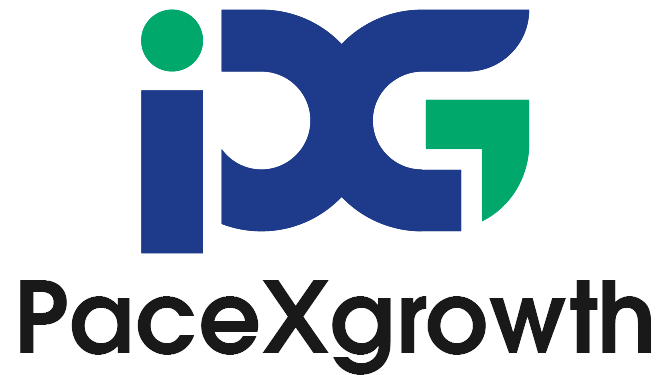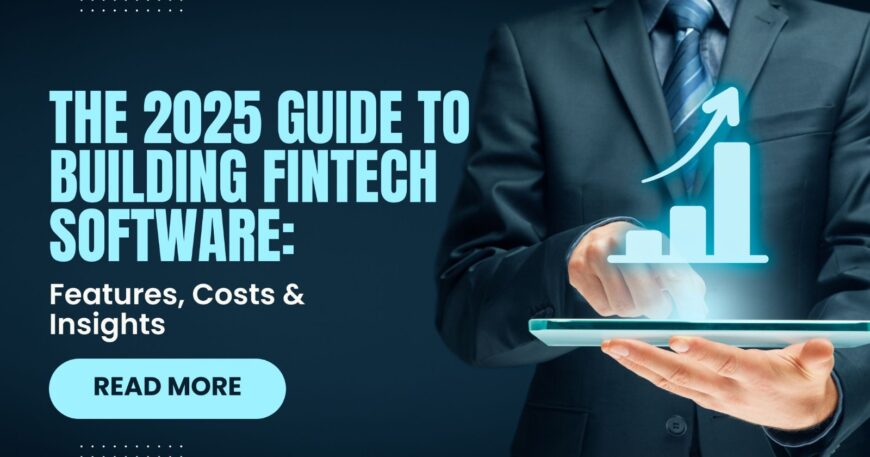Introduction:
The fintech industry is undergoing rapid transformation, fueled by innovation and advancements in technology. As we move into 2025, the demand for cutting-edge financial solutions is at an all-time high, pushing businesses to adopt sophisticated software that meets both consumer expectations and regulatory standards. Whether you’re building a banking app, a payment platform, or a wealth management solution, understanding the key features of fintech software development and having a clear cost breakdown is essential for success.
In this article, we will explore the critical features that define high-performing fintech software in 2025—ranging from advanced security protocols to AI-driven personalization—and break down the costs involved in bringing such a product to life. By the end, you’ll have a clear roadmap to help you navigate the complexities of fintech software development, ensuring you create solutions that are both innovative and financially sustainable.
Let’s dive into the essential features you need to consider when developing fintech software and how to plan for the costs that come with building a future-proof platform.
Lead Fintech Innovation—Build with Us!
Key Features to Include When Developing Fintech Software
To stay competitive in the fast-evolving fintech landscape, your Fintech Software Development must do more than just process transactions. It must be secure, smart, and seamless. Here are the must-have features for fintech software in 2025:
1. Advanced Security & Data Protection
- End-to-end encryption
- Biometric authentication (Face ID, fingerprint)
- Multi-factor authentication (MFA)
- AI-powered fraud detection and prevention
2. AI-Driven Personalization
- Personalized dashboards with smart insights
- Spending analytics and financial forecasting
- AI chatbots for 24/7 customer support
3. Real-Time Payments & Transfers
- Support for UPI, ACH, SWIFT, and crypto transfers
- Instant settlement capabilities
- QR code and NFC-based payments
4. KYC & Regulatory Compliance Tools
- Automated KYC/AML verification
- GDPR, PCI-DSS, and local regulatory integrations
- Role-based access control for audit trails
5. Seamless API Integration
- Open banking support
- Easy integration with third-party services (banks, credit bureaus, tax tools)
- API-first architecture for scalability
6. Multi-Device & Cloud Support
- Web, mobile, and wearable device compatibility
- Cloud-native infrastructure for scalability and uptime
- Offline mode for essential features
7. User-Friendly UX/UI Design
- Simple onboarding flow
- Intuitive dashboards
- Dark/light mode and accessibility options
The Importance of Security in Fintech Software Development
When it comes to fintech, security isn’t just a feature—it’s the foundation. In 2025, with cyberattacks on the rise and increasing scrutiny from regulators, fintech companies must prioritize robust security from day one.
Why Is Security Critical in Fintech?
- Sensitive User Data: Fintech apps handle personal data, payment information, and bank credentials—prime targets for hackers.
- Strict Compliance Requirements: Regulatory frameworks like PCI DSS, GDPR, and local KYC/AML laws mandate high-level data protection.
- User Trust Equals Business Growth: A single data breach can ruin user trust and brand reputation instantly.
- Fraud and Identity Theft Risks: Real-time financial services demand equally fast fraud detection and prevention systems.
Key Security Best Practices for Fintech in 2025
- End-to-End Encryption: Protects data during transmission and at rest.
- Biometric & Multi-Factor Authentication (MFA): Adds layers beyond passwords for secure access.
- Tokenization & Secure APIs: Ensures that payment data is never exposed during transactions.
- Zero Trust Architecture: Verifies every request, inside or outside the network.
- Continuous Monitoring: AI-driven tools for real-time anomaly detection and alerts.
- Regular Security Audits: Routine penetration testing and compliance checks to close vulnerabilities.
Selecting the Right Fintech Software Development Company for Your Fintech Solution
Compliance-First Mindset
The company should have deep knowledge of regulations like:
- PCI-DSS
- GDPR
- KYC/AML frameworks
- Country-specific financial laws (e.g., US, UK, EU, Asia)
Strong Tech Capabilities
Ensure the team is skilled in:
- Secure backend languages (e.g., Python, Node.js, Go)
- Cross-platform mobile tech (e.g., Flutter, React Native)
- Cloud-native solutions (AWS, GCP, Azure)
- Blockchain, AI, or other advanced fintech technologies
Security-Driven Development
They should follow secure SDLC practices and conduct regular security audits, penetration testing, and risk assessments.
Agile & Transparent Process
You need a company that:
- Communicates clearly
- Delivers incrementally (Agile methodology)
- Involves you in the product roadmap
Post-Launch Support & Scaling
The relationship shouldn’t end at launch. Make sure they offer:
- Ongoing maintenance
- Feature scaling
- Compliance updates
Ask for case studies, client testimonials, and tech stack insights. A reliable fintech development company will be transparent, collaborative, and aligned with your business goals.
Cost of Developing Fintech Software in 2025
Fintech software development costs vary widely based on features, complexity, tech stack, and compliance requirements. A simple MVP (minimum viable product) with essential features may cost around $30,000 to $80,000, while a full-fledged solution with real-time payments, AI, and blockchain integration could exceed $500,000. Partnering with an experienced Fintech Software Development Company can help you optimize costs while ensuring regulatory compliance and high performance. Don’t forget to account for ongoing maintenance, updates, and security patches post-launch, which are vital in the fast-moving fintech industry.
It’s also important to consider regulatory compliance costs, especially if you’re operating in multiple regions. Integrating third-party tools like KYC/AML APIs, payment processors, and credit bureaus adds to the overall budget. Working with an experienced fintech development company can help optimize development time, reduce risks, and deliver better long-term ROI.
The Role of User Experience (UX) in Fintech Software Success
In the fast-evolving world of financial technology, success hinges not just on innovation and security—but also on exceptional user experience (UX). As consumers increasingly rely on digital platforms to manage their finances, fintech companies must prioritize intuitive, accessible, and seamless interfaces to build trust, drive engagement, and stay competitive. In 2025 and beyond, UX is not just a design choice—it’s a business strategy.
Why UX Matters in Fintech
- Trust and Credibility: Financial data is sensitive. A clean, easy-to-navigate interface helps build trust with users.
- Retention and Engagement: Frictionless UX keeps users coming back—especially in banking, payments, and investment apps.
- Regulatory Compliance: Good UX ensures compliance features (e.g., KYC, two-factor authentication) don’t disrupt usability.
- Accessibility: Fintech should be inclusive. UX design ensures accessibility across age groups, tech skills, and disabilities.
- Competitive Differentiator: In a saturated market, great UX can set your app apart from feature-similar competitors.
Key UX Elements in Fintech Software
- Onboarding Simplicity
Smooth sign-up and KYC flows reduce drop-off rates. - Clear Information Architecture
Organizing data logically (e.g., dashboards, transaction history) improves user understanding and confidence. - Microinteractions & Feedback Loops
Visual cues, alerts, and confirmations enhance user satisfaction and reduce errors. - Mobile Optimization
Most fintech usage happens on smartphones—UX must be mobile-first and responsive. - Security Without Friction
Biometric logins and behavioral authentication must balance protection with convenience. - Personalization
Tailored dashboards, alerts, and product suggestions improve the user journey and retention.
UX Trends Shaping Fintech in 2025
- Voice-activated interfaces
- AI-driven chatbots with emotional intelligence
- Dark mode and user-controlled themes
- Gamified financial education and savings tools
- Minimalist, distraction-free UI for decision-making
About PaceXgrowth- Top-Leading Fintech Software Development Company
PaceXgrowth stands out in the fintech landscape for its deep domain expertise and user-centric development approach. With a strong track record of building secure, scalable, and future-ready fintech solutions, the company supports financial institutions and startups alike in navigating the complexities of digital transformation. From building MVPs to deploying full-scale platforms with AI, blockchain, and real-time analytics, PaceXgrowth ensures that every solution aligns with industry regulations and evolving user expectations. Their team emphasizes agility, innovation, and long-term support—critical elements for success in today’s fast-paced fintech ecosystem.
Conclusion: Start Your Journey to Develop Innovative Fintech Software That Meets Future Demands Today!
As fintech continues to revolutionize the way we handle money, prioritizing user experience (UX) in your software is more critical than ever. A seamless, intuitive, and secure UX is no longer a luxury—it’s an essential component for success in the competitive world of financial technology. By focusing on simplicity, personalization, and accessibility, fintech companies can build lasting relationships with their users and stay ahead of evolving market demands.
If you’re ready to develop innovative fintech solutions that are not only cutting-edge but also user-friendly, now is the time to start your journey. The future of fintech is shaped by how well it serves its users—make sure your software is ready to meet these expectations and drive success in the years to come.
Let’s create the next generation of fintech software that empowers users while ensuring seamless financial experiences. Reach out to experts today and take the first step toward creating impactful, future-proof fintech solutions!
Top 10 FAQs on Developing Fintech Software in 2025
1. What is fintech software?
Ans: Fintech software includes digital tools for banking, investing, payments, lending, and more — designed to improve how users interact with money.
2. How long does it take to develop a fintech app?
Ans: A basic fintech MVP may take 3–6 months. More complex platforms with AI or blockchain features may take 9–12 months or longer.
3. What technologies are used in fintech development?
Ans: Common tech includes cloud infrastructure, APIs, AI/ML, blockchain, and modern front-end frameworks like React or Flutter.
4. How much does it cost to build a fintech app?
Ans: Costs range from $30,000 for an MVP to $500,000+ for an enterprise-level platform, depending on features, compliance, and tech stack.
5. Is it safe to outsource fintech development?
Ans: Yes, if you choose a company with proven fintech experience, strong security practices, and knowledge of financial compliance standards.
6. What are the must-have features in 2025?
Ans: Key features include biometric login, real-time payments, AI insights, KYC tools, multi-currency support, and robust data encryption.
7. How do I ensure my fintech app is compliant?
Ans: Work with legal and compliance experts early. Your dev team should follow standards like PCI-DSS, GDPR, and AML/KYC rules.
8. Should I build for web or mobile first?
Ans: Mobile-first is usually the best approach in fintech due to higher user engagement and the demand for anytime, anywhere access.
9. How do fintech apps make money?
Ans: Common models include transaction fees, subscriptions, lending interest, affiliate commissions, or data monetization (if compliant).
10. Can I integrate crypto or blockchain into my fintech app?
Ans: Yes. Many fintech apps in 2025 support crypto wallets, trading, or blockchain-based smart contracts, especially in DeFi or cross-border use cases.




